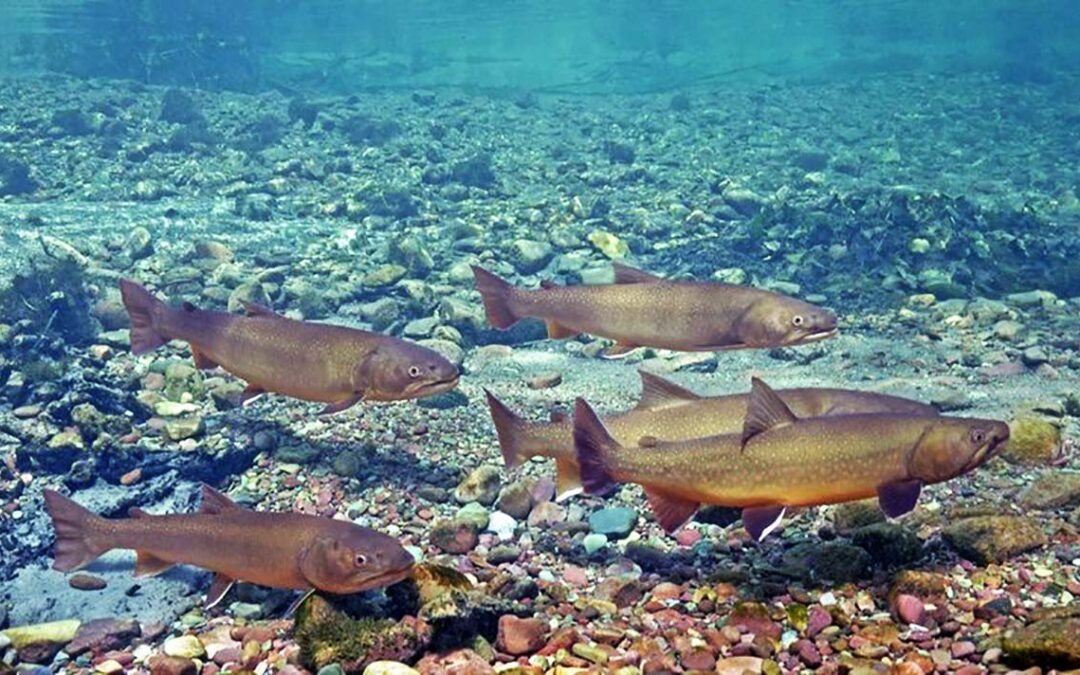Photo courtesy of Pat Clayton
The Clark Fork River is federally-designated as “critical habitat” for bull trout, which have been listed as “threatened” under the Endangered Species Act since 1999. The Upper Clark Fork is also part of the nation’s largest Superfund site having suffered severe pollution from flushing a century of toxic mining and smelting wastes down the river.
Hundreds of millions of dollars have already been spent trying to restore life to this embattled river by removing toxic tailings from its banks. But it is absolutely necessary to ensure the river contains enough water to support the aquatic ecosystem, dilute what heavy metals still leach into it, and provide the clean, cold, and connected river system that bull trout require to exist.
Yet every year a massive amount of the Upper Clark Fork’s scarce water is diverted into the West Side irrigation ditch to grow hay to feed cattle and horses on the Grant-Kohrs ranch, which is owned and operated by the National Park Service as a historic site and “cultural display” of a working ranch. In most years, the West Side Ditch takes 50% or more of the entire flow of the Upper Clark Fork in mid-to-late summer. In drought years, which are ever more frequent in the West, the diversion takes upwards of 90% of the river’s flow.
The result is there’s simply not enough water left instream for the bull trout to survive. The extent of dewatering by the Park Service has modified the bull trout’s critical habitat so adversely that the species cannot survive in that portion of the Upper Clark Fork, much less migrate to headwaters streams to spawn.
Of course the Alliance for the Wild Rockies supports preserving Montana’s historic places, but it’s fair to say the bull trout, which have inhabited the Clark Fork since the last ice age, have occupied a much longer part of Montana’s history than the 1850 ranch and shouldn’t be driven to extinction due to dewatering by the National Park Service.
Because the bull trout are listed as “threatened” under the Endangered Species Act, they may not be killed – and any activities that “harass” listed species require the issuance of an “incidental take” permit from the U.S. Fish and Wildlife Service. “Harass” is legally defined in the Endangered Species Act as “an intentional or negligent act or omission which creates the likelihood of injury to wildlife by annoying it to such an extent as to significantly disrupt normal behavioral patterns which include, but are not limited to, breeding, feeding, or sheltering.”
Obviously, diverting most of the river’s flow “disrupts normal behavioral patterns” of bull trout. Yet, the Park Service hasn’t gone through the process of consultation with the US Fish and Wildlife Service as legally required for an incidental take permit. Nor, shockingly, has it even installed simple, widely-used, fish screens to keep any bull trout that might survive the low flows in the main river from entering the irrigation ditch where they face certain death.
The ranch irrigates 413 acres and has water rights for 500 acre-feet. An acre foot is the amount of water necessary to cover one acre a foot deep. The result is that every acre on the ranch can get more than a foot of water simply to grow hay while the river goes dry and the bull trout face extinction.
Put it all together and it’s clear why the Alliance for the Wild Rockies and Friends of the Bull Trout recently filed a lawsuit on May 10th against the National Park Service under the Endangered Species Act to require it follow the law, consult with the U.S. Fish and Wildlife Service on how to stop killing bull trout, and cease their activities that are destroying bull trout critical habitat. We are also asking the Court to order the immediate installation of fish screens to protect bull trout.
Because the Grant-Kohrs Ranch is at the downstream end of the Westside Ditch and holds the most senior water rights, any water not consumed for cattle feed can be left in the Clark Fork River. We have millions of cows in Montana, but there are very few bull trout left, especially in their historic spawning area of the Upper Clark Fork River. Considering the Clark Fork River was a healthy river full of bull trout when the Grant-Kohrs Ranch was founded in 1850 the real question is whether the Park Service should destroy bull trout critical habitat simply for a historic ranch display – especially when growing less hay can help return the Clark Fork to a living river where bull trout can once again survive, spawn, and avoid extinction.
It’s expensive to sue the federal government – but all too often that’s what it takes to force the government to follow the law. Please consider helping us return the Clark Fork River to its historic condition full of bull trout. And remember, clean, cold, and connected rivers keep people, as well as bull trout, healthy.
Mike Garrity is the Executive Director of the Alliance for the Wild Rockies
